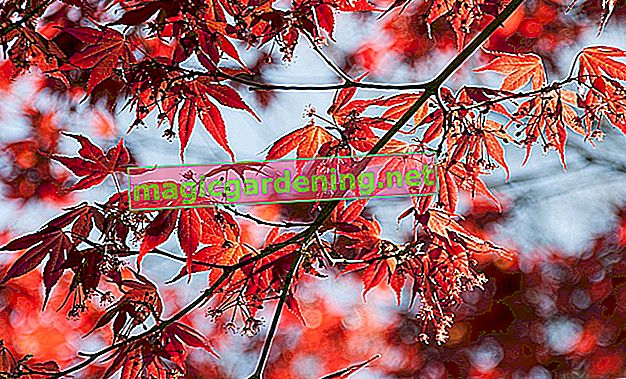
Location
In terms of location, the Japanese maple is quite demanding: on the one hand, it needs a lot of light for strong budding and an intense autumn color, on the other hand, many of the 500 or so cultivars cannot tolerate direct sun. For this reason, you should place the tree in a sunny place in spring and autumn (but avoid the midday sun!) And offer it a more partially shaded place in summer. In addition, the location should be protected from the wind, as the Japanese maple reacts to strong winds with brown leaf tips.
also read
- Japanese maples are usually easy to overwinter
- Japanese maple - location, plants, propagation
- Japanese maple inspires with intensive flowering
Substrate and repotting
The substrate should be as loose as possible, permeable, nutrient-rich and slightly moist. A sandy loam soil, which you can mix yourself from humus soil, Akadama (a dimensionally stable, burnt loam granulate) and a fine-grain mineral substrate (e.g. lavalite), is ideal. At best, repotting takes place every one to two years. Older specimens from around 10 years old only need to be repotted every five years.
Watering and fertilizing
Although the Japanese maple likes it slightly damp, it cannot tolerate waterlogging or strong fluctuations in water. It will most likely react to constantly changing drought and wetness with brown leaf tips. It is better to let the bale dry slightly and then water it moderately. Leaves and shoots should not be wetted if possible, this only increases the risk of a fungal infection. Otherwise, the tree is provided with an organic fertilizer about every two weeks between April and August.
Cutting and Wiring
In terms of cutting, the Japanese maple is a difficult candidate, as it tends - like almost all maples - to bleed heavily. In addition, pruning increases the risk of fungal infections, to which the maple is unfortunately very susceptible. Therefore, any necessary pruning should be carried out in autumn - when the sap pressure is no longer that great. In spring, sick and dead shoots can be removed. Cut wounds should always be closed. A leaf cut or pinching is possible at any time, wiring is done in June.
Tips
The Japanese maple is considered to be hardy, but it can suffer frost damage in the shallow bonsai pots. Therefore, a frost-free wintering at a maximum of six degrees Celsius is recommended.








